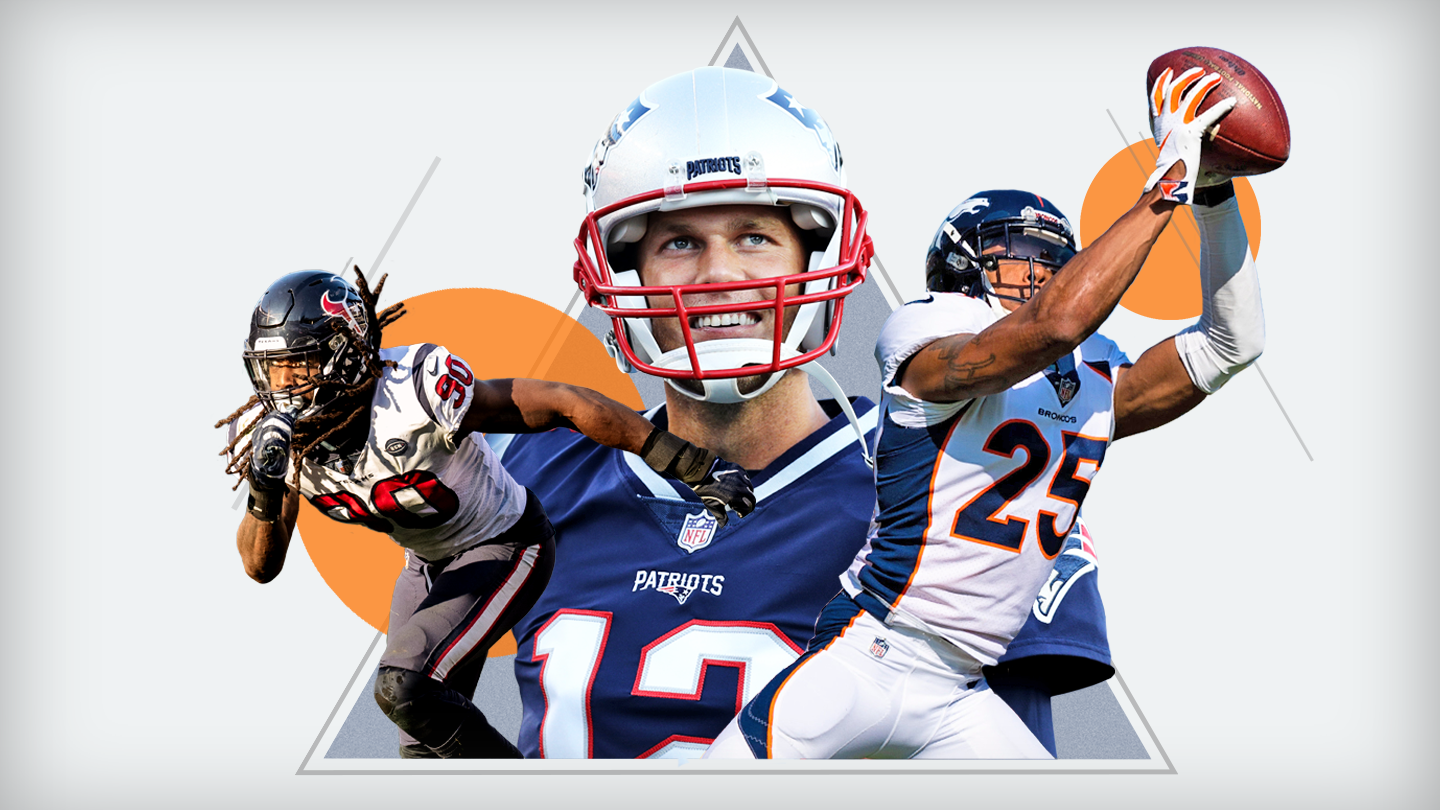No NFL team manages to fill all of its holes during the offseason. Each has a weak point or two that gets revealed by injuries or disappointing play over the course of a season. Even the most successful offseasons of 2018 prove that point. The Bears surrounded Mitchell Trubisky with talent, acquired a dominant pass-rusher in Khalil Mack and won the NFC North, only for the kicker who signed a four-year extension to sputter out over the course of the year and collapse at the worst possible moment. The Colts needed to turn to midseason acquisition Dontrelle Inman when their wideouts were struggling to stay healthy.
Every NFL team still has some work to do. In some cases, that’s filling a roster spot or supplementing a positional group. In others, it’s locking up a player who is about to hit free agency. Some teams have much more to do over the next few months than others.
After identifying on Monday the key things all 16 NFC teams have to accomplish before the calendar turns to September, let’s finish up today with the AFC, where we still have one team in need of a general manager as we approach June:
JUMP TO A TEAM:
AFC East: BUF | MIA | NE | NYJ
AFC North: BAL | CIN | CLE | PIT
AFC South: HOU | IND | JAX | TEN
AFC West: DEN | KC | LAC | OAK

AFC East

Move on from LeSean McCoy. The Bills keep saying that they want to keep the 31-year-old McCoy around for the final year of his extension. The rest of their offseason seems at odds with that stance. General manager Brandon Beane signed Frank Gore and T.J. Yeldon in free agency and used a third-round pick on Devin Singletary. That’s a perfectly reasonable running back rotation without McCoy, who is coming off of an injury-riddled season in which he averaged 3.2 yards per carry.
McCoy’s numbers should theoretically get better behind a much-improved offensive line, but what’s the endgame here? Shady isn’t Buffalo’s back of the future behind Josh Allen. He offers more as a receiver than Gore and more as a runner than Yeldon, but he’s on the wrong side of 30 and has more than 2,300 carries on his tires.
It’s likely McCoy’s final season in western New York. The Bills could save $6.2 million by releasing the former Eagles standout, money they could roll over into 2020. It’s possible that Beane is trying to create a trade market by suggesting McCoy will be on the roster, but he won’t have a market with that $6.2 million base salary. It’s time to look toward the future.
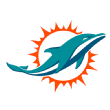
Lock up Laremy Tunsil. The Dolphins have had a refreshingly logical offseason as they begin to rebuild their roster. They have one Pro Bowl-caliber young talent to build around on either side of the ball, and after re-signing cornerback Xavien Howard, they should start looking to lock up their star left tackle. Tunsil still has two years to go on his rookie deal, but the price of left tackles is only going to go up over the next two seasons. Eric Fisher and Tyron Smith both signed extensions after the third year of their rookie deals, and Tunsil could very well follow in their footsteps.
Find interior line help. The biggest reason Josh Rosen played so poorly in Arizona was his offensive line. By the time Rosen finished the season, he was lining up behind rookies, practice squad guys and veterans signed off the street and immediately inserted into the lineup.
The mere presence of Tunsil means Rosen will be behind a better line in Miami. Outside of Tunsil, though, the group could use some work. The early option at right tackle to replace Ja’Wuan James, who signed with the Broncos, is former Bills tackle Jordan Mills. Buffalo fans won’t miss him. Daniel Kilgore is penciled in at center, with Jesse Davis at right guard and rookie third-rounder Michael Deiter on the left side. At the very least, the Dolphins should look to the waiver wire to see if any more appealing options become free on the right side of their line. Taking a shot on someone like Chance Warmack to try to challenge Deiter and Davis would make sense for a team that should be going after higher-upside options.

Extend Tom Brady. I wrote last month about Brady’s coming contract extension. It’s still unclear how much he might leave on the table as part of a deal, but the Patriots aren’t ready for a future without their Hall of Fame signal-caller. Thankfully for the Pats, the feeling is mutual.
Keep an eye out for receivers. The Patriots have attempted to address the holes in their depth chart by drafting N’Keal Harry and signing Demaryius Thomas, Dontrelle Inman, Benjamin Watson and Austin Seferian-Jenkins, but none of those veterans is ever a lock to make the team or make serious contributions. (See: Holt, Torry, and Ochocinco, Chad.) Josh Gordon is theoretically on the roster, but the Patriots can’t expect the former Browns wideout to be available for any length of time.
While Bill Belichick probably doesn’t need to take a flier on any more low-cost free agents, the Pats still have $6 million in cap room and should create more as part of the Brady extension. If a difference-maker at receiver becomes available via trade, the Pats should take the plunge. A.J. Green probably isn’t leaving Cincinnati, but it wouldn’t be shocking to see someone like Mohamed Sanu or Jordan Reed become available.
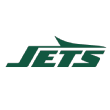
Hire a general manager. Where to start? You can reduce the Mike Maccagnan firing to a “Same old Jets!” one-liner, but as Joe Caporoso said on Twitter, it’s not that simple. It’s hardly unprecedented for a team to hire its coach in January and then move on from its general manager after the draft — the Bills did just that with Sean McDermott and Brandon Beane a couple of years ago — but the immediate leaks after the firing about how Adam Gase didn’t want to sign Le’Veon Bell added an unmistakable whiff of same old Jets to the equation.
To get past the obvious: Maccagnan can’t have too many complaints about losing his job. The Jets have gone 14-34 over the past three seasons. Maccagnan’s one winning season, a 10-6 campaign in 2015, came because he took over a team with oodles of cap space and spent wildly on veterans. Many of those moves — Eric Decker, Darrelle Revis, and Buster Skrine come to mind — failed to pay off after 2015. The Jets also aren’t thrilled with Trumaine Johnson, Maccagnan’s big catch from last offseason. Maccagnan can say that he’s leaving the team with Sam Darnold, Leonard Williams and Jamal Adams, but most of Maccagnan’s drafts after the first round have been a mess.
1:07
Adam Schefter is not buying the speculation connecting Peyton Manning to the Jets general manager job.
Likewise, this isn’t a job Gase is qualified to handle. Gase controlled the 53-man roster in Miami with often-disastrous results, as the Dolphins oscillated from plan to plan and showed little grasp of a big picture. Gase rode a winning streak against terrible opponents into an unlikely playoff spot in 2016 and then doubled down to lock up the core of that team with awful contracts. When that same team failed to launch in 2017, Gase and Mike Tannenbaum traded away Jay Ajayi as a scapegoat to fix the team’s culture, only for Ajayi to then win a Super Bowl with the Eagles. The Dolphins then doubled down on fixing their culture last offseason by paying over the odds for slot receivers Albert Wilson and Danny Amendola while cutting Ndamukong Suh, who promptly went to the Super Bowl with the Rams. It’s fair to wonder if Gase is even a good coach, let alone a competent personnel evaluator.
The Jets are reportedly interested in hiring Eagles executive Joe Douglas to take over as general manager, and there are rumblings of the team casting eyes toward Peyton Manning. The Manning rumors seem desperate and an attempt to appeal toward the same newspapers that were excoriating the Jets several days ago. This is a team with a promising young quarterback, but the Jets spent a ton of money this offseason and don’t appear to have anything close to a finished roster. Getting an experienced evaluator and letting him do his or her job would be the best-case scenario for Gang Green.
AFC North

Add defensive help. The Ravens have shed front-seven pieces this offseason, and in return, they’ve … brought back Pernell McPhee and signed former Broncos first-rounder Shane Ray. They already had plenty of talent and will promote from within, but they could sorely use veteran help. They can already line up a pair of fearsome defensive linemen in Brandon Williams and Michael Pierce, but I admit I find the idea of the Ravens signing Ndamukong Suh or Gerald McCoy and threatening teams with interior pressure to be extremely enticing. With $14.5 million in cap space, the Ravens could make a short-term deal work.
Work on re-signing Pierce, Matt Judon, and Patrick Onwuasor. I wasn’t kidding about the front-seven thing. The Ravens lost four of their top five defenders there in terms of 2018 snap count in C.J. Mosley, Terrell Suggs, Za’Darius Smith, and Brent Urban, and they can’t afford to keep shedding that talent. Pierce, Judon and Onwuasor are all unrestricted free agents in 2020, and with Joe Flacco‘s contract finally coming off of the books, the Ravens will have nearly $40 million in cap space. The goal should be to re-sign two of their three young stars.
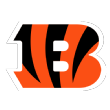
Re-sign A.J. Green. I covered the parameters of a Green extension back in February. His deal is inherently tied to Julio Jones‘ coming contract, so the two are likely locked in a waiting game for the other one to sign. Barring a change of heart from Green, he and the Bengals should eventually come to terms on an extension in the range of $19 million per year.
And Tyler Boyd. The most pleasant surprise in what was a difficult 2018 season, Boyd went from looking like he might not make the 53-man roster to emerging as a valuable starting wideout. Third-year turnarounds like Boyd’s are rare, but not unprecedented — Roddy White comes to mind as an example — and the Bengals should look to keep him around, even if they lock up Green. As a 2016 second-round pick, Boyd becomes an unrestricted free agent after the season, so the Bengals might want to sign Boyd before the season begins. He would be looking at a deal in the $11 million-$12 million range.
And William Jackson. Cincinnati’s first-round picks during the late stages of the Marvin Lewis era generally haven’t panned out. Tyler Eifert (2013) couldn’t stay healthy. Darqueze Dennard (2014) didn’t develop into a regular until 2018 and only netted a one-year deal for $4.5 million after his rookie contract ran out. Cedric Ogbuehi (2015) was a replacement-level lineman. John Ross (2017) hasn’t been healthy or consistent over his first two seasons, although the vertical burner managed to somehow catch five touchdowns of 6 yards or less and seven total touchdowns on just 21 receptions last season.
The one exception to the bunch is Jackson, who missed all of his rookie season with a torn pectoral muscle before emerging as a No. 1 cornerback during the second half of 2017. The Bengals picked up Jackson’s fifth-year option after the season and could start negotiating a deal with him now. Fourth-year extensions aren’t common for first-round picks, but the Bengals might want to get Jackson’s deal done before the Jags lock up fellow 2016 first-rounder Jalen Ramsey.
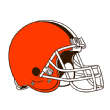
Grab Gerald McCoy. Good on the Browns for waiting out the McCoy situation. While the Buccaneers publicly hemmed and hawed about McCoy’s future in the hopes that the Browns would send a draft pick to Tampa, general manager John Dorsey resisted the urge and could end up getting the player without giving up a pick while paying a cheaper salary. The Browns probably weren’t especially interested in McCoy at his $13 million base, but they should now be able to go after the former Oklahoma star at a lesser salary. Rotating McCoy in with Larry Ogunjobi and Sheldon Richardson would give the Browns one of the most disruptive interiors in all of football.
Re-sign Joe Schobert. There have been rumors suggesting that the Browns might move on from their ever-present linebacker, but the 2017 Pro Bowler is an above-average player against both the pass and run when healthy. New defensive coordinator Steve Wilks built his defense in Carolina around a pair of rangy linebackers in Luke Kuechly and Thomas Davis; in Cleveland, those guys are Schobert and Christian Kirksey. Schobert kept Jamie Collins off the field in nickel situations, which is one of the reasons the Browns cut Collins this offseason. They should use some of the savings to lock up Schobert, who could command north of $10 million per season.

Explore the trade market for Artie Burns. It’s too early to give up on Burns, who looked to be a promising cornerback as recently as this time last year, but the former first-round pick was torched during the first half of 2018 before being benched for virtually the entire second half of the campaign. The Steelers declined his fifth-year option and signed Steven Nelson to take Burns’ place in the lineup; at this point, it’s probably more important for the organization to see what Cameron Sutton and Justin Layne have to offer.
Burns should have some trade value, given that he’s still only 24 and would only cost the acquiring team $1.8 million. Teams like the Chiefs, Eagles and Patriots are fond of taking shots on rookie deal corners, although you would understand if the Steelers didn’t exactly want to pick up the phone and dial any of those rivals. It might instead make sense to target NFC teams like the Lions and Cardinals as possible trade partners.
AFC South

Resolve the Jadeveon Clowney situation. I suggested in February that the Clowney contract negotiations would be more difficult than the typical franchise-tag talks. The 26-year-old Clowney’s ability to take over games is obvious, but the former first overall pick has microfracture surgery in his past and hasn’t hit 10 sacks or 25 knockdowns in a single season. The Texans would argue that Clowney should be paid like someone who might turn into a Defensive Player of the Year candidate.
Clowney and his representation might argue that he’s about to become one, and while the Texans might not be as confident, at least one of the 31 other teams in the NFL would be likely to take the plunge and bet on it happening. A healthy Clowney might approach $20 million per year on the free market. The Texans could franchise Clowney again at $19.1 million in 2020, but that also makes it more likely he will just leave in 2021 for nothing more than a compensatory pick in the 2022 draft.
If the Texans think there’s a good chance Clowney will eventually leave for a compensatory pick, it’s better for them to find that one true believer team before Clowney hits the market. Plenty of teams would love to add a 26-year-old pass-rusher with Clowney’s upside. If the Frank Clark trade is any indication, there’s a chance the Texans could pick up a first-round pick in return for the former Ole Miss star. Unlike the Raiders, who had nothing in the defensive cupboard after trading Khalil Mack, the Texans could move forward with J.J. Watt and Whitney Mercilus on the edge.
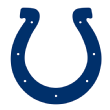
Sign Morris Claiborne. The Colts were able to address cornerback by re-signing breakout incumbent Pierre Desir and using a second-round pick on immaculately named Temple corner Rock Ya-Sin, but Desir is one year removed from being a backup, and rookie cornerbacks often struggle.
The Colts have young players like Kenny Moore and Quincy Wilson who will compete for regular snaps, and the best-case scenario would be for Desir and Moore to play the way they did a year ago, but why not take a flier on a veteran like Claiborne who played in the Tampa-2 under Monte Kiffin? At this point, Claiborne is likely going to settle for a one-year deal, which would leave little risk for Indy.
Extend Jacoby Brissett. The Colts swooped in and traded Phillip Dorsett for Brissett when the Pats were about to cut their third-string quarterback. The NC State product responded with a competent season in Andrew Luck‘s absence during the 2017 campaign. Brissett wasn’t needed last season when Luck returned, and the much-improved offensive line helped keep pass-rushers off Luck, but it would be foolish for the Colts to assume that Luck will never get hurt again.
This is a team that should be placing a premium on the backup quarterback spot. Unless Indy gets a significant trade offer for Brissett as he enters the final year of his rookie deal, the Colts should lock him up now. With plenty of cap space, the Colts can afford to make Brissett one of the league’s best-paid backups with something like a three-year, $21 million pact.
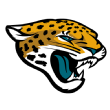
Find a backup quarterback. The Jaguars made their move at quarterback this offseason by replacing Blake Bortles with Nick Foles. A healthy Foles is an upgrade on the oft-frustrating Bortles, but said health is always going to be a question mark for the Super Bowl LII MVP, who has yet to string together 10 consecutive starts as a pro while struggling with a broken hand, a concussion and a fractured collarbone. Even last year, during Foles’ five-game run at the end of the season replacing Carson Wentz, he was briefly forced from a game against the Texans.
The chances of Foles missing time are larger than most, and the Jaguars’ backup plan is … sixth-round picks Tanner Lee (2018) and Gardner Minshew (2019). As unappealing as someone like Brock Osweiler might be, the Jags would do well to upgrade on Lee and Minshew by signing the former Broncos starter.
Add a safety. Barry Church and Tashaun Gipson looked like Jacksonville’s safety pairing of the future during a dominant 2017 season, but Church was cut during an topsy-turvy 2018 season, while Gipson followed him out the door after the campaign. The Jags will start 2018 third-round pick Ronnie Harrison at one safety spot, but the other one is currently ticketed for special-teamer Jarrod Wilson. The safety market isn’t flooded with talent like it was a year ago, but guys like Eric Berry, Kurt Coleman and Tre Boston are still out there.
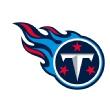
Lock up Kevin Byard. While the 2017 first-team All-Pro didn’t make it back to the squad for a repeat performance, the disappearing recognition has more to do with lazy judgments than anything else. In 2017, Byard got the nod because he racked up eight interceptions, most of which were catching horribly thrown balls from the likes of Bortles and DeShone Kizer. In 2018, Byard played just as well, but he only had four picks. Judging safeties by their interception totals is a bad way to judge them.
Putting the year-by-year totals aside, Byard is a talented player with legitimate ball skills and range. He even chipped in two sacks a year ago. Byard turns 26 in August and is the first real defensive building block drafted by the Jon Robinson regime in Tennessee. The Titans should want to lock up Byard before he becomes an unrestricted free agent in 2020. The price tag should come in somewhere around $12 million per season.
AFC West

Do something with Chris Harris Jr. The adjective that comes to mind when I think about Harris’ last contract is “scandalous.” He signed a five-year, $42.5 million deal with just $10.9 million guaranteed at signing in December 2014 and quickly outplayed that contract, making the Pro Bowl two months later and then in each of the two ensuing seasons. Harris made the trip again in 2018, although his season was cut short after 12 games by a fractured fibula.
At his best, Harris is one of the best cornerbacks in football. Even rarer is that Harris is capable of playing both outside and in the slot, which matters in a league in which offenses are bringing their star wideouts into the slot more frequently than ever before. I would be a little worried about the soon-to-be-30-year-old Harris as he ages, given that the track record of undersized cornerbacks after 30 can be scary, but even a lesser version of Harris would be valuable.
The Broncos don’t seem desperate to make up for lost pay. They went out and addressed the cornerback position by signing Kareem Jackson and Bryce Callahan, who should start alongside Harris. If the Broncos don’t want to pay three corners and think Jackson’s long-term future is there instead of safety, Harris would be the odd one out as he enters the final year of his deal.
Harris should have some trade value on what amounts to a one-year, $7.8 million deal before entering free agency. Just about every contending team could find a way to justify forcing him into the lineup. For many of those teams, he would likely be their best corner. I think the Broncos should shell out for the new deal Harris wants, but if that’s not going to happen, teams like the Falcons and 49ers should be dialing Denver this summer.
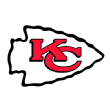
Shop for interior OL help. Andy Reid and offensive line coach Andy Heck always seem to make the interior of their offensive line work. Players like Jeff Allen and Rodney Hudson have left for big deals in years past, only for the Chiefs to promote from within, develop a draft pick, or make a useful player out of someone else’s bust.
Last year, even on the best offense in football, things weren’t always great. The Chiefs cycled through Cameron Erving and a returning Allen at left guard, and neither was particularly impressive. Mitch Morse and Laurent Duvernay-Tardif combined to miss 16 games. Allen and Morse are no longer on the roster, and while Austin Reiter filled in at center and will return in 2019, the Chiefs didn’t do much to address their line this offseason.
Duvernay-Tardif is an excellent guard when healthy, but the Chiefs have to think about challenging Erving and Reiter with more than late-round picks like Kahlil McKenzie and Nick Allegretti. They should be in the market to add a veteran, although Reid will likely have to wait until preseason cuts to identify a target with meaningful upside. The best guy left on the market right now, coincidentally, is Allen.
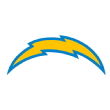
Extend Philip Rivers. The Chargers signed Tyrod Taylor and drafted Easton Stick this offseason, but they would shudder if anybody besides Rivers suited up for meaningful snaps under center in 2019. As he enters the final year of his deal, Rivers should get something in line with the two-year, $68 million extension Ben Roethlisberger agreed with the Steelers.
Let Melvin Gordon play out his fifth-year option. I laid out the argument in February for moving on from Gordon after this season, and while Le’Veon Bell didn’t end up breaking the running back bank in free agency, Gordon is still likely to attract a David Johnson-sized deal. That’s not good value for the Chargers. If Gordon has a career year, the Chargers can happily franchise their former first-round pick and work on an extension next offseason. Right now, they’re probably better served exploring an early deal with Joey Bosa.
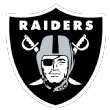
Give Rodney Hudson a new deal. One of the few Reggie McKenzie plans that Jon Gruden decided to follow has been building around the offensive line. The Raiders have moved on from Donald Penn and Kelechi Osemele, but Gruden used his top two picks in the 2018 draft on offensive linemen before handing Trent Brown a four-year, $66 million deal this offseason.
Hudson, who McKenzie signed to a five-year deal in March 2015, has been the best Raiders lineman over the past two seasons. He might also have a case for being the best center in football. The former Chiefs pivot is a free agent after the season, but the 29-year-old should still have several more solid seasons left in the tank. The Raiders should make it a priority to keep around Hudson with a new deal, even given that it will likely cost somewhere around $47 million or so over four years to get it done.
